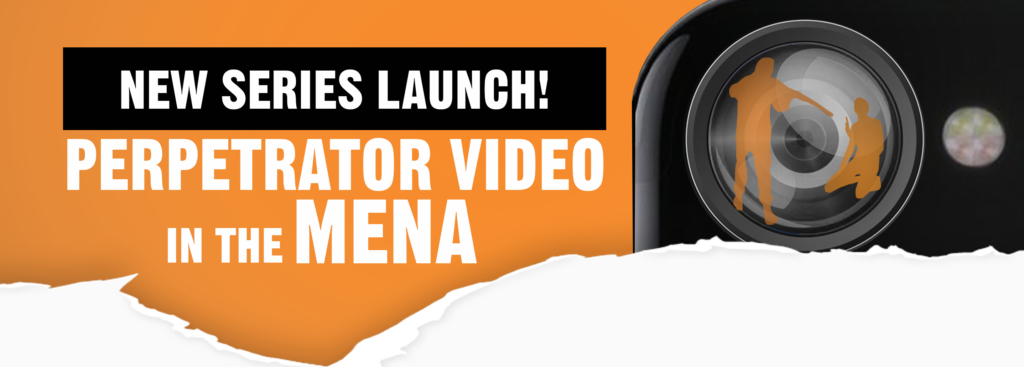This post is part of the WITNESS Media Lab’s new project, “Perpetrator Video in the Middle East and North Africa (MENA)”. This project examines how human rights advocates and journalists can turn the proliferation of eyewitness and perpetrator video into more ethical and effective storytelling and documentation of human rights abuse in the MENA. Follow along each month as we share resources, case studies, and more to strengthen and protect communities against harm through safer, more ethical and more effective use of video in contemporary reporting and advocacy in the MENA.
By Raja Althaibani
In Spring 2013, a series of eyewitness videos, showing a previously unknown armed group in the Middle East, surfaced online. One of the videos shows several vehicles equipped with loudspeakers, driving down a public road in Raqqa, Syria announcing the arrival of the Islamic State (ISIS). Soon a flood of eyewitness videos were circulating documenting ISIS members carrying out public torture, executions, and mistreatment of women.
Many of Raqqa’s citizens who documented ISIS’ crimes, and vocalized their criticism were immediately targeted, tortured and killed. For example, Abdalaziz Alhamza of the grassroots human rights group Raqqa Is Being Silently Slaughtered (RBSS) told David Remnick at The New Yorker that ISIS “…closed Christian churches and Shia mosques. They committed countless human-rights violations, the first being a public execution that I witnessed with many others. The reaction of people in Raqqa at first was to demonstrate against ISIS. Because I took part in that, I came under investigation. I was interrogated by ISIS five times.”
The proliferation of eyewitness video—like that published by RBSS and many other of Raqqa’s citizens—can provide rare access to conflict zones, detention centers, and other areas otherwise unreachable by the professionals who seek to uncover abuse, war crimes and other violations. But within this massive volume of information, there is also content filmed and distributed by the perpetrators of abuse themselves which is meant to spark fear, intimidate their enemies, glamorize violence, shame, radicalize and for amusement.
This new generation of eyewitness “perpetrator video,” as exemplified by ISIS’ own self-produced videos (part of their sophisticated propaganda machine), is forcing us to contend with new dynamics of abuse and ask: how do we use these videos to our advantage without becoming amplifiers for the abusers and put people in greater risk?
A new project from the WITNESS Media Lab seeks to address that question. Perpetrator Video in the Middle East and North Africa (MENA) is an in-depth look at the proliferation of eyewitness and perpetrator video in the region and explores how this content is transforming the ways human rights and accountability is reported, pursued, exercised and violated. This project is for human rights advocates and journalists interested in turning this content into more ethical and effective storytelling and documentation of human rights abuse in the MENA and beyond.
Drawing on more than 26 years of partnering with citizens, advocates, journalists, lawyers in order to strengthen their strategic use of video for human rights advocacy, we have explored and developed guidance around verifying videos that originate on the social web as well as Ethical Guidelines for Using Eyewitness Videos in Human Rights Reporting and Advocacy. In our Perpetrator Video in the Middle East and North Africa project, we build on that work and we will produce resources and recommendations to help human rights advocates, journalists, investigators and technologists address questions such as:
- How can we find and verify perpetrator videos to expose injustice? And how do we minimize harm while exposing abuse?
- When possible, how do we exercise principles of ethical documentation such as informed consent, and how do we develop a clear set of guidance for using professional judgement when those indicators are not present?
- How can we make sense of footage that is shot by multiple sources, particularly video shot by perpetrators of abuse?
- How can we determine which videos, among the many intended to cause harm, can be connected to meaningful opportunities for justice and accountability?
- How do we ensure the stories and information we share are a fair and ethical representation of the truth and (inclusive) of the communities we’re covering?
- How do we turn mass volumes of perpetrator content-including graphic footage-into new sources of data for reporting and advocacy without sharing the content itself?
- And how do we do we do so while ensuring the safety of the multi-stakeholders involved: individuals onscreen, their communities, viewers and if eyewitness footage, those behind the camera and at-risk sources? Particularly when it involves multi-stakeholders who are underrepresented.
Case Studies
In the coming weeks we will share resources and recommendations through a series of case studies of eyewitness and perpetrator footage from MENA on issues ranging from migrant abuse in the Gulf Cooperation Council states such as Saudi Arabia, Qatar and the United Arab Emirates, war crimes being committed in Syria, and considerations for how to turn perpetrator video into new forms of data for reporting and advocacy.
In the meantime, please have a look at our Ethical Guidelines and follow us on:
Twitter: @witness_lab and @witness_MENA
We also want to hear from you about what you would like to know and learn more about. Feel free to reach out to me at raja [@] witness [dot] org.

